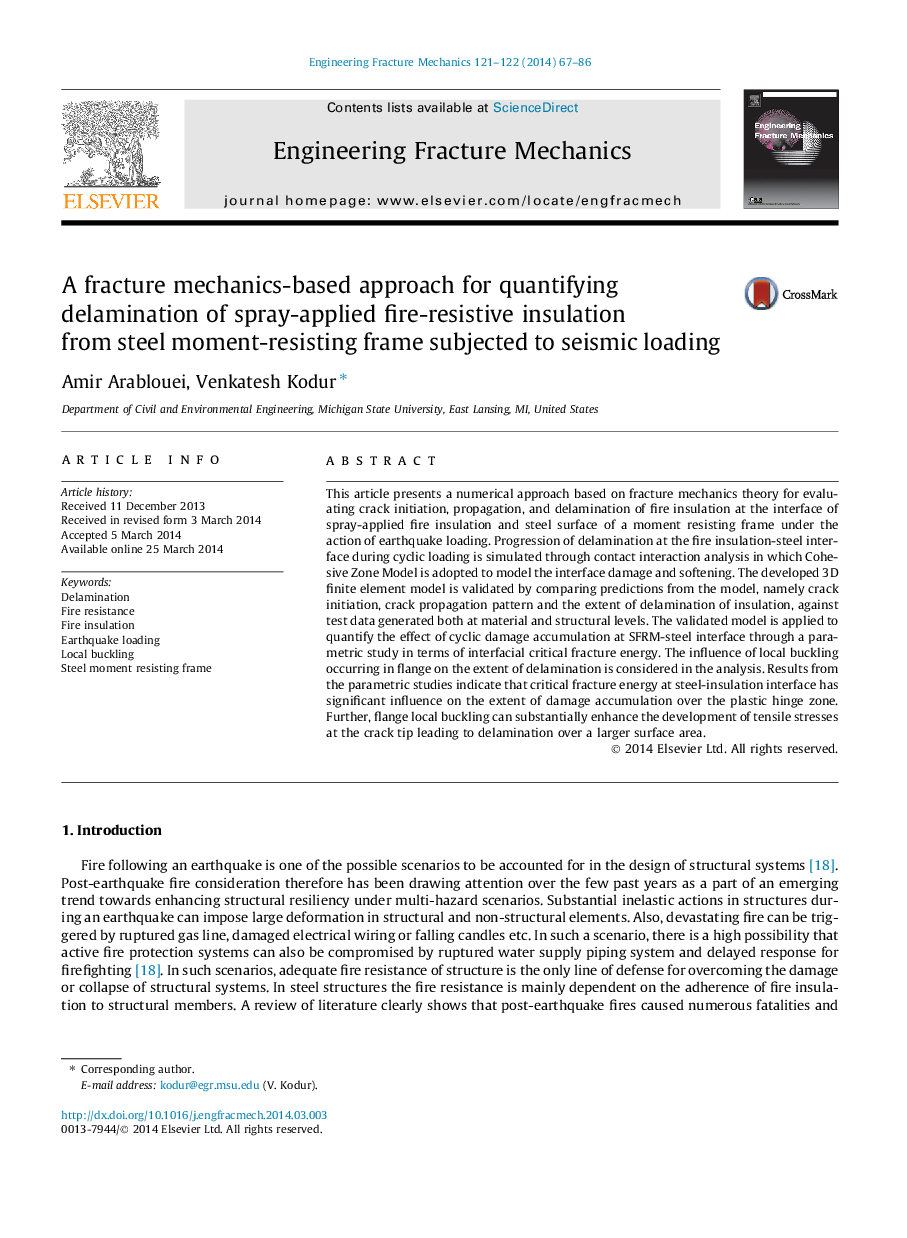| Article ID | Journal | Published Year | Pages | File Type |
|---|---|---|---|---|
| 770302 | Engineering Fracture Mechanics | 2014 | 20 Pages |
•Delamination of fire insulation from steel structures is modeled numerically.•Contact interaction analysis is carried out using Cohesive Zone Model.•Influence of critical fracture energy on the extent of delamination is derived.•Effect of local bucking on the extent of delamination in beam flanges is quantified.
This article presents a numerical approach based on fracture mechanics theory for evaluating crack initiation, propagation, and delamination of fire insulation at the interface of spray-applied fire insulation and steel surface of a moment resisting frame under the action of earthquake loading. Progression of delamination at the fire insulation-steel interface during cyclic loading is simulated through contact interaction analysis in which Cohesive Zone Model is adopted to model the interface damage and softening. The developed 3D finite element model is validated by comparing predictions from the model, namely crack initiation, crack propagation pattern and the extent of delamination of insulation, against test data generated both at material and structural levels. The validated model is applied to quantify the effect of cyclic damage accumulation at SFRM-steel interface through a parametric study in terms of interfacial critical fracture energy. The influence of local buckling occurring in flange on the extent of delamination is considered in the analysis. Results from the parametric studies indicate that critical fracture energy at steel-insulation interface has significant influence on the extent of damage accumulation over the plastic hinge zone. Further, flange local buckling can substantially enhance the development of tensile stresses at the crack tip leading to delamination over a larger surface area.
